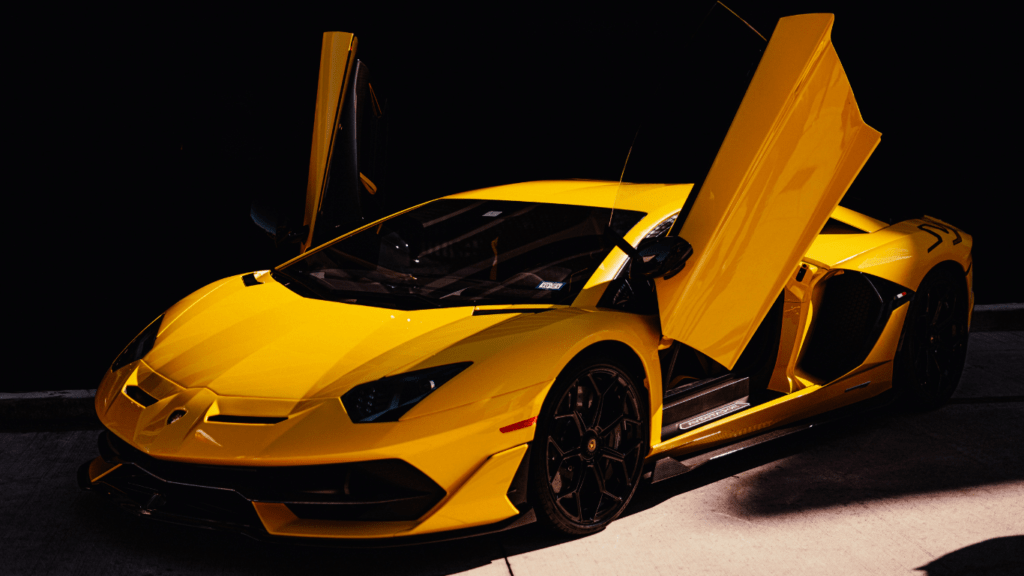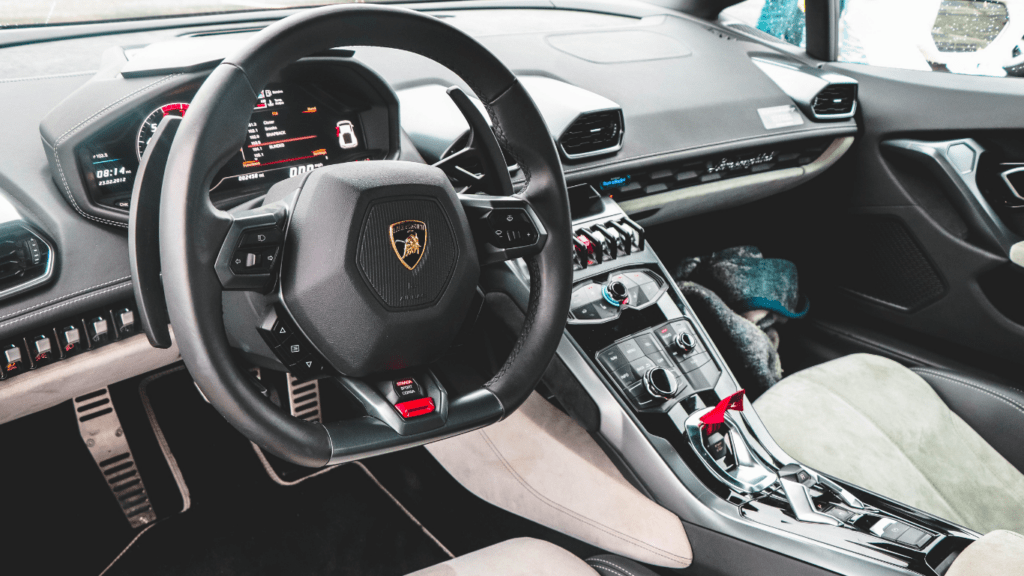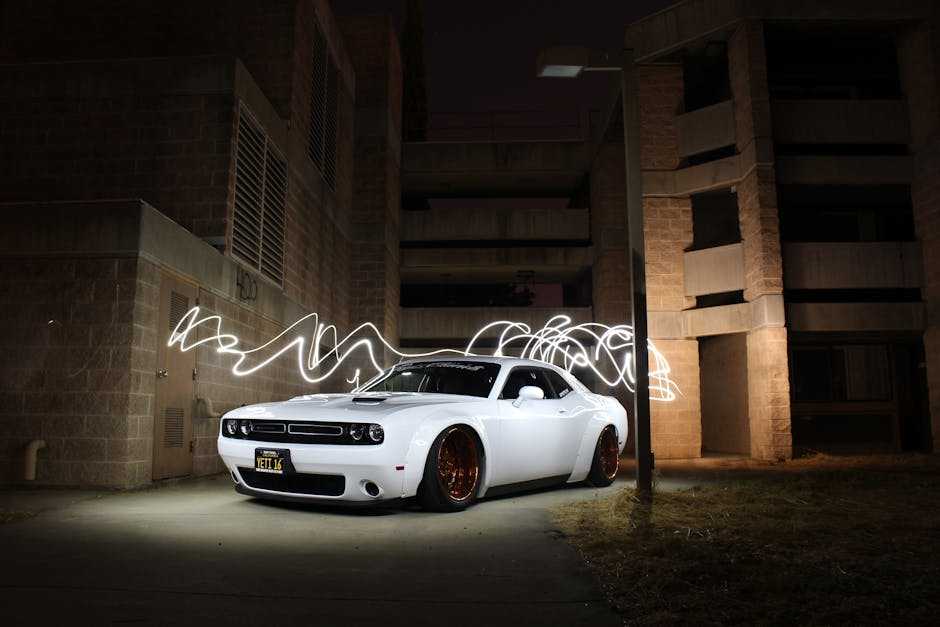The Evolution of Luxury Cars
Advancements in technology have fundamentally altered the landscape of luxury vehicles. Initially, luxury cars were symbols of status and comfort, featuring premium materials and craftsmanship. However, technological innovations have since transformed them into high-performance, smart vehicles that cater to the evolving needs of drivers.
Integration of Advanced Safety Features
Luxury cars now incorporate cutting-edge safety systems, making driving safer and more intuitive. Features like:
- adaptive cruise control
- lane-keeping assist
- automatic emergency braking
use sensors and cameras to monitor the surroundings and respond to potential hazards. These systems enhance safety by providing real-time feedback and intervening when necessary.
Emergence of Infotainment Systems
Infotainment systems in modern luxury cars combine entertainment, navigation, and connectivity. High-resolution touchscreens, voice control, and intuitive interfaces have redefined the in-car experience. These systems offer seamless integration with smartphones, providing access to music, navigation apps, and communication tools while keeping drivers focused on the road.
Development of Self-Driving Capabilities
Self-driving technology represents one of the most significant advancements in luxury cars. Autopilot features and semi-autonomous driving modes relieve some of the burdens of driving, enhancing comfort and safety. These systems use a combination of GPS, radar, and artificial intelligence to navigate roads and adapt to traffic conditions. While still in the development phase, fully autonomous luxury cars promise to revolutionize the driving experience further.
Focus on Sustainability
Sustainability has become a crucial aspect of luxury cars. Manufacturers are now incorporating eco-friendly materials and pioneering electric and hybrid technologies. Electric luxury cars provide a blend of performance, efficiency, and environmental consciousness. Companies like Tesla, BMW, and Audi are leading the charge in producing high-end electric vehicles, combining luxury with sustainability.
Personalization and Customization
Technology enables a high degree of personalization in luxury cars. Advanced software allows drivers to customize settings for comfort, driving modes, and even aesthetic preferences. Features like personalized ambient lighting, seat adjustments with memory functions, and tailored infotainment options ensure that each drive is uniquely suited to the driver’s taste.
Connectivity and Smart Features
Connectivity has become indispensable in modern luxury vehicles. Cars now act as smart devices, syncing with personal gadgets and the internet. Features like predictive maintenance alerts, remote start, and real-time traffic updates provide convenience and enhance the overall driving experience. These connected systems anticipate needs, offering solutions before drivers realize they require them.
Technological innovations have undeniably propelled luxury cars into a new era. Between enhanced safety, infotainment advancements, autonomous capabilities, sustainability efforts, personalization, and connectivity, the definition of luxury in the automotive world continues to evolve.
Advanced Driver-Assistance Systems (ADAS)

Advanced Driver-Assistance Systems (ADAS) are at the forefront of how technology is revolutionizing luxury cars. These systems enhance safety and convenience, making driving both easier and more enjoyable.
Adaptive Cruise Control
Adaptive cruise control uses radar and cameras to maintain a safe distance from the vehicle ahead. By automatically adjusting speed, it ensures a smooth, hassle-free driving experience in traffic. BMW and Tesla are prime examples of brands incorporating this technology, which significantly reduces driver fatigue during long journeys.
Lane Keep Assist
Lane Keep Assist uses sensors to detect lane markings and gently steers the vehicle back if it begins to drift. This feature acts as an additional safety net, especially on highways. Brands like Mercedes-Benz and Audi have integrated this system, enhancing the driver’s control and comfort by preventing unintentional lane departure.
Advanced Driver-Assistance Systems are transformative technologies in luxury cars, setting new standards for safety and convenience.
Immersive Infotainment Systems
Luxury cars offer immersive infotainment systems that significantly enhance the driving experience. These systems integrate seamlessly, providing advanced functionalities through intuitive user interfaces.
Touchscreen Interfaces
High-resolution touchscreen interfaces dominate modern luxury car dashboards. They provide easy access to navigation, audio, and vehicle settings. Tesla’s large center screens, for example, show real-time data and offer personalized user profiles. Audi’s MMI touch response system supports multi-touch gestures, allowing users to pinch, zoom, and swipe just like on a smartphone. Digital displays provide haptic feedback, making interactions more tactile.
Voice-Activated Controls
Voice-activated controls create a hands-free experience for drivers. These systems understand natural language commands, making it easier to control entertainment, navigation, and climate settings. Mercedes-Benz’s MBUX system, for example, allows drivers to say “Hey Mercedes” to initiate commands like adjusting the temperature or setting a destination. BMW’s Intelligent Personal Assistant learns user preferences, offering personalized responses. Voice recognition enhances safety by reducing the need to look away from the road.
Electric and Hybrid Technologies
Electric and hybrid technologies are at the forefront of revolutionizing luxury cars. They blend performance with sustainability, reshaping the driving experience in remarkable ways.
Performance Improvements
Electric and hybrid luxury cars offer impressive performance advancements. Electric motors, with their instant torque, deliver rapid acceleration and smooth power delivery. Examples include the Tesla Model S, which accelerates from 0 to 60 mph in just 2.3 seconds, and the Porsche Taycan, known for its dynamic handling and high-speed stability. Hybrid systems, combining internal combustion engines with electric motors, ensure optimal power use. The BMW 745e, for instance, offers a combined 389 horsepower, enhancing both efficiency and driving pleasure. Advanced battery technologies, such as lithium-ion packs, support long-range capabilities and fast charging, further enhancing usability.
Environmental Benefits
- Environmental benefits are a significant advantage of electric and hybrid luxury vehicles.
- They produce lower emissions compared to traditional combustion engines, contributing to cleaner air quality.
- The Mercedes-Benz EQS boasts zero tailpipe emissions, making it an eco-friendly yet luxurious option.
- Hybrid models, like the Lexus LS 500h, reduce fuel consumption through regenerative braking and optimal engine use, leading to fewer carbon emissions.
- Renewable energy integration in production and recycling initiatives also ensures these vehicles align with broader sustainability goals.
- This alignment not only benefits consumers but also supports global environmental targets, positioning luxury brands as leaders in green technology integration.
Autonomous Driving
Technology is revolutionizing the way luxury cars operate, and autonomous driving is at the forefront of this transformation. Self-driving capabilities are enhancing the driving experience by integrating innovative systems that promise safety and convenience.
Current Capabilities
Luxury car brands have integrated advanced autonomous driving features, redefining the driving experience. Adaptive cruise control uses radar and cameras to maintain a safe distance from other vehicles automatically. Lane keep assist gently steers the vehicle back into its lane if it begins to drift. Automatic emergency braking activates to prevent collisions by detecting potential obstacles and applying brakes promptly.
Tesla’s Autopilot stands as a prominent example, enabling hands-free highway driving and automatic lane changes. Mercedes-Benz’s Drive Pilot offers level 3 autonomy, managing driving tasks in certain conditions without driver intervention. Audi’s Traffic Jam Pilot assists with driving in congested traffic, reducing the burden on the driver.
Future Potential
Future potential for autonomous driving in luxury cars looks promising, with continuous advancements expected. Companies like Tesla and Waymo are developing Full Self-Driving systems aiming for complete autonomy. These systems promise to handle most driving scenarios, requiring no human intervention.
Integration of V2X (Vehicle-to-Everything) communication will enhance the intelligence of autonomous driving. Cars will interact with traffic lights, other vehicles, and road infrastructure, optimizing traffic flow and safety. Advanced AI algorithms will improve decision-making processes, making autonomous driving more reliable and efficient in complex environments.
Luxury car manufacturers are paving the way for a future where driving will be more about choice and experience rather than necessity, revolutionizing what it means to drive a luxury car.
Enhanced Safety Features
Luxury cars are experiencing a significant transformation through the integration of cutting-edge safety technologies. These enhancements are designed to protect both drivers and passengers, elevating the safety standards to unprecedented levels.
Collision Avoidance
Many luxury vehicles include collision avoidance systems that use various sensors and cameras. These systems monitor the car’s surroundings, helping to prevent accidents. For example, automatic emergency braking engages to stop the vehicle if a potential collision is detected. Similarly, adaptive cruise control maintains a safe distance from the car ahead by adjusting the vehicle’s speed. Combining radar and camera-based systems, the forward collision warning alerts drivers to potential hazards. These technologies work together to create a more secure driving environment.
Night Vision
Night vision systems improve visibility in low-light conditions, enhancing nighttime driving safety. Infrared cameras mounted on the car capture the heat signatures of objects ahead, projecting them onto the dashboard display. This advanced feature detects pedestrians, animals, and obstacles beyond the range of the car’s headlights. Luxury brands like BMW and Audi offer night vision as an optional feature in their high-end models. Such technology goes beyond standard lighting, providing an additional layer of safety during nighttime or low-visibility conditions.



 Head of Automotive Insights
Head of Automotive Insights
